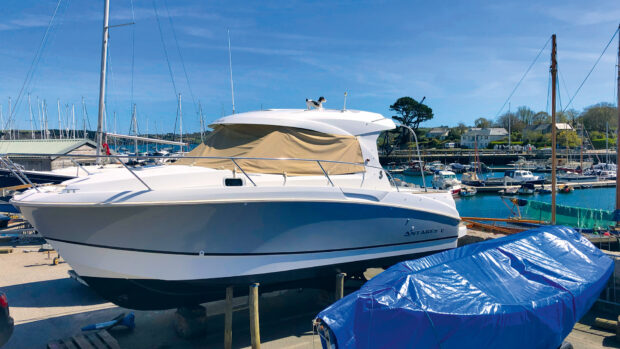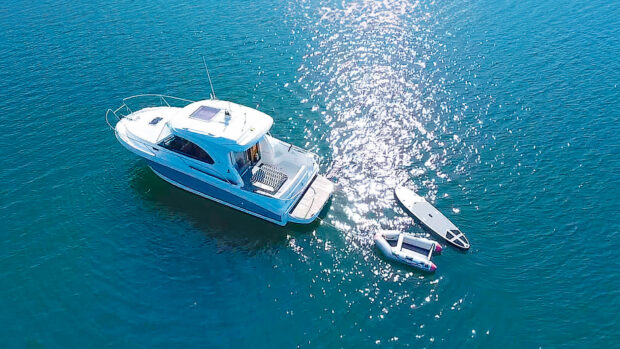Leaving or arriving at at a berth is one of the biggest boating challenges. In this video we show you how to berth single-handed safely and easily
Boating alone can be a glorious experience. Obviously you need to approach it with a safety-first mindset, but I really enjoy time alone on the boat, and the satisfaction that comes from dealing with all the challenges is immense.
Inevitably it’s leaving or arriving at a berth that presents the biggest challenge, even though it’s really just an extension of the normal crewed process with some additional planning and preparation to ensure it goes smoothly.
One of the most common concerns is arriving back at your original berth to find that the perfect conditions you enjoyed on your departure have changed and you are now faced with a much more difficult, if not near-impossible challenge. The answer is to change your plans and choose a berth that you can manage. And never be embarrassed to ask the marina or a fellow boater to take your lines.
As with so many aspects of boating, preparation is key. Leaving a berth efficiently is done by assessing the elements, which line comes off first, and how to get the boat clear. I usually start at the bow by removing the bow line and walking aft, coiling it as I go so it can be neatly stowed away. Then I remove the stern line, step smartly aboard, go to the helm and leave in a positive manner before I’m blown back on to the berth.
I like to make it easy to remove the lines and fenders by stopping the boat with the stern to any elements so the bow doesn’t get pushed around. I then tidy them away on deck without rushing. I always try to do a couple at a time and then return to the helm to check my position.
When arriving somewhere new, I find doing a drive-by of my intended berth allows me to check its suitability and assess the wind and tide. Unless the conditions are really light, then a berth where the elements are assisting you onto the pontoon will generally make things easier. Fenders will need to be set and adjusted to the correct height, and I always lay the bow line along the side deck (taking care to pass it up and over the bow rails) so it can be picked up easily as soon as you step ashore. I leave the stern line loosely flaked and attached for the same reason.
The key is not to rush. It sounds obvious, but many a berthing manoeuvre is ruined by rushing in, especially since you have no crew to shout out the distances as you make your approach. Aim to get the whole boat into the berth and stopped before you attempt to step away from the helm, leaving the elements to close the last few inches to the pontoon. Judging distance is crucial – stop too far away and the elements may push you on too fast; get too close and you risk not stopping in time. In both cases you are likely to bounce off the fenders and get pushed back out of the berth.
Only when you’re certain you’ve judged it correctly should you leave the helm and walk to the exit point to get your first line on. I tend to go with stern line first, then walk forward taking the bow line with me. The exception being when I am berthing into a strong tide or wind. In that instance, stepping off at the stern and taking the bow line forward first may be more practical to prevent the boat moving aft.

How to: Clean your teak decks
In the first of our 12-part maintenance series, Nick Burnham guides you through the best techniques to clean your teak

VIDEO: How to – Head to windward
In our latest boat handling video, Jon Mendez shows how best to trim the boat when you head to windward

VIDEO: How To – Use Pile Moorings
It may not be a manoeuvre you need all that often but it’s one that you need to know about










